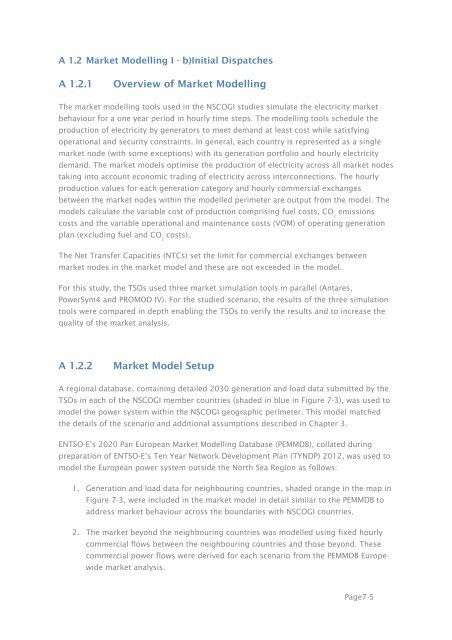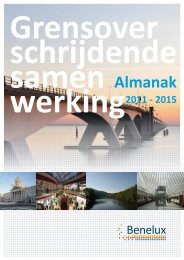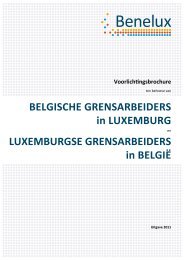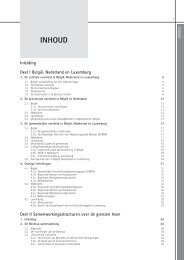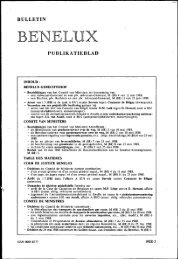The North Seas Countries' Offshore Grid Initiative - Initial ... - Benelux
The North Seas Countries' Offshore Grid Initiative - Initial ... - Benelux
The North Seas Countries' Offshore Grid Initiative - Initial ... - Benelux
Create successful ePaper yourself
Turn your PDF publications into a flip-book with our unique Google optimized e-Paper software.
A 1.2 Market Modelling I - b)<strong>Initial</strong> Dispatches<br />
A 1.2.1 Overview of Market Modelling<br />
<strong>The</strong> market modelling tools used in the NSCOGI studies simulate the electricity market<br />
behaviour for a one year period in hourly time steps. <strong>The</strong> modelling tools schedule the<br />
production of electricity by generators to meet demand at least cost while satisfying<br />
operational and security constraints. In general, each country is represented as a single<br />
market node (with some exceptions) with its generation portfolio and hourly electricity<br />
demand. <strong>The</strong> market models optimise the production of electricity across all market nodes<br />
taking into account economic trading of electricity across interconnections. <strong>The</strong> hourly<br />
production values for each generation category and hourly commercial exchanges<br />
between the market nodes within the modelled perimeter are output from the model. <strong>The</strong><br />
models calculate the variable cost of production comprising fuel costs, CO emissions<br />
2<br />
costs and the variable operational and maintenance costs (VOM) of operating generation<br />
plan (excluding fuel and CO costs).<br />
2<br />
<strong>The</strong> Net Transfer Capacities (NTCs) set the limit for commercial exchanges between<br />
market nodes in the market model and these are not exceeded in the model.<br />
For this study, the TSOs used three market simulation tools in parallel (Antares,<br />
PowerSym4 and PROMOD IV). For the studied scenario, the results of the three simulation<br />
tools were compared in depth enabling the TSOs to verify the results and to increase the<br />
quality of the market analysis.<br />
A 1.2.2 Market Model Setup<br />
A regional database, containing detailed 2030 generation and load data submitted by the<br />
TSOs in each of the NSCOGI member countries (shaded in blue in Figure 7-3), was used to<br />
model the power system within the NSCOGI geographic perimeter. This model matched<br />
the details of the scenario and additional assumptions described in Chapter 3.<br />
ENTSO-E’s 2020 Pan European Market Modelling Database (PEMMDB), collated during<br />
preparation of ENTSO-E’s Ten Year Network Development Plan (TYNDP) 2012, was used to<br />
model the European power system outside the <strong>North</strong> Sea Region as follows:<br />
1. Generation and load data for neighbouring countries, shaded orange in the map in<br />
Figure 7-3, were included in the market model in detail similar to the PEMMDB to<br />
address market behaviour across the boundaries with NSCOGI countries.<br />
2. <strong>The</strong> market beyond the neighbouring countries was modelled using fixed hourly<br />
commercial flows between the neighbouring countries and those beyond. <strong>The</strong>se<br />
commercial power flows were derived for each scenario from the PEMMDB Europewide<br />
market analysis.<br />
Page7-5


